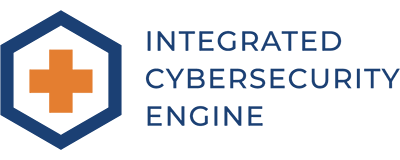What San Diego Golf Culture Can Teach Us About Cybersecurity Risk Management
Southern California is known for a lot of things: sun, surf, startups — and yes, golf.
.jpg?width=924&height=520&name=Image%20(6).jpg)
But golf in San Diego isn’t just a sport. It’s a strategy. And the more time you spend at places like Torrey Pines Golf Course, the more parallels you start to see between championship-level golf and the precision planning that defines great cybersecurity risk management.
Just ask the ICE Cybersecurity team — many of us are players, and we’ve walked these fairways firsthand, multiple times.
Golf in San Diego Isn’t Seasonal. It’s a Mindset.
In San Diego, where the temperature hovers between 65 and 75 year-round, golf isn’t a season — it’s a lifestyle. Public and private courses alike stay booked, from desert layouts to coastal gems. But no course draws more attention than Torrey Pines, perched atop the cliffs in La Jolla with Pacific views stretching to the horizon.
And while the setting is iconic, it’s the story of Torrey that truly sets it apart.
San Diego: Home of Golf's R&D Powerhouses .jpeg?width=265&height=334&name=Image%20(10).jpeg)
If golf had a Silicon Valley, it would be San Diego. The region is home to some of the sport’s
biggest names: Callaway Golf, Titleist, TaylorMade, Ping, Cobra, Top-Flite, Odyssey, Scotty Cameron and other golf-tech companies with national and international reach.
These brands design and test in SoCal year-round, making San Diego the proving ground for the next generation of club and ball innovation. Just like cybersecurity, golf is a game of continuous adjustments, and the companies that get it right continuously adjust to the changing threat landscape.
From Barracks to Back Nine: The Legacy of Torrey Pines
Long before it was a golf mecca, the land now known as Torrey Pines was military real estate. During WWII, it was home to Camp Callan, an anti-aircraft training base. After the war, it briefly became a raceway, with legends like Carroll Shelby taking laps before the roar of engines gave way to the whisper of putters.
In 1957, Torrey Pines Golf Course was born — a public course from day one, designed by William F. Bell and intended to remain accessible to all by the wishes of its grantors, the Scripp sisters. That spirit still defines the course today.
.jpg?width=1024&height=768&name=Image%20(7).jpg)
Picture: CFO Lunch & Explore Group with Torrey Pine Golf Pro, Joe DeBock and the US Open Cup.
The 2008 U.S. Open: Tiger’s Grit and San Diego’s Rise
Torrey Pines hit the global stage in 2008, when Tiger Woods, injured and limping, beat Rocco Mediate in one of the most dramatic playoffs in U.S. Open history. That moment — fought on a municipal course — proved that you don’t need a private club pedigree to compete at the highest level.
And that’s the lesson: With vision, planning, and execution, public infrastructure can stand toe to toe with elite systems. The same applies in cybersecurity risk management.
2021: Jon Rahm’s Redemption
.jpg?width=1024&height=576&name=Image%20(5).jpg)
ICE CEO Ford Winslow and I volunteered at the 2021 U.S. Open at Torrey, walking the course and seeing the action up close. We watched Bryson DeChambeau implode on the 17th, and Jon Rahm went on to take the title.
Torrey didn’t just host a tournament — it tested the world’s best. Long fairways, shifting winds, deep bunkers, and championship-level difficulty. That’s what resilient systems look like.
Public Course, Championship Standards: A CSRM Parallel
 Just like Cybersecurity Risk Management (CSRM), Torrey Pines proves that strategy beats spending. You don’t need the biggest budget — you need the right focus:
Just like Cybersecurity Risk Management (CSRM), Torrey Pines proves that strategy beats spending. You don’t need the biggest budget — you need the right focus:
- Strong foundations (just like SDTA’s Tourism Marketing District)
- Adaptive strategy (course redesigns, just like evolving threat models)
- Public benefit with elite performance (just like CSRM’s goal: security without excess)
At ICE Cybersecurity, we take the same approach. We believe resilience should be built in, not bought out. That’s why we work with clients to shape long-term risk strategies that are right for them, based on industry, budget, and risk tolerance.
Final Thoughts: What Golf Teaches Us About Cybersecurity
.jpg?width=1024&height=576&name=Image%20(9).jpg) So, is Torrey Pines on par with St. Andrews or Pebble Beach? We’d say yes. But more importantly, it’s accessible — not locked behind country club gates. That’s a mindset we bring to cybersecurity, too.
So, is Torrey Pines on par with St. Andrews or Pebble Beach? We’d say yes. But more importantly, it’s accessible — not locked behind country club gates. That’s a mindset we bring to cybersecurity, too.
San Diego is where innovation meets execution — in golf, in tech, and in security. And just like a great round, real risk management comes down to understanding the risks, managing them and be willing to adjust to the changing conditions.
Want to learn how ICE Cybersecurity helps organizations build resilient, performance-ready risk strategies?

.jpg)